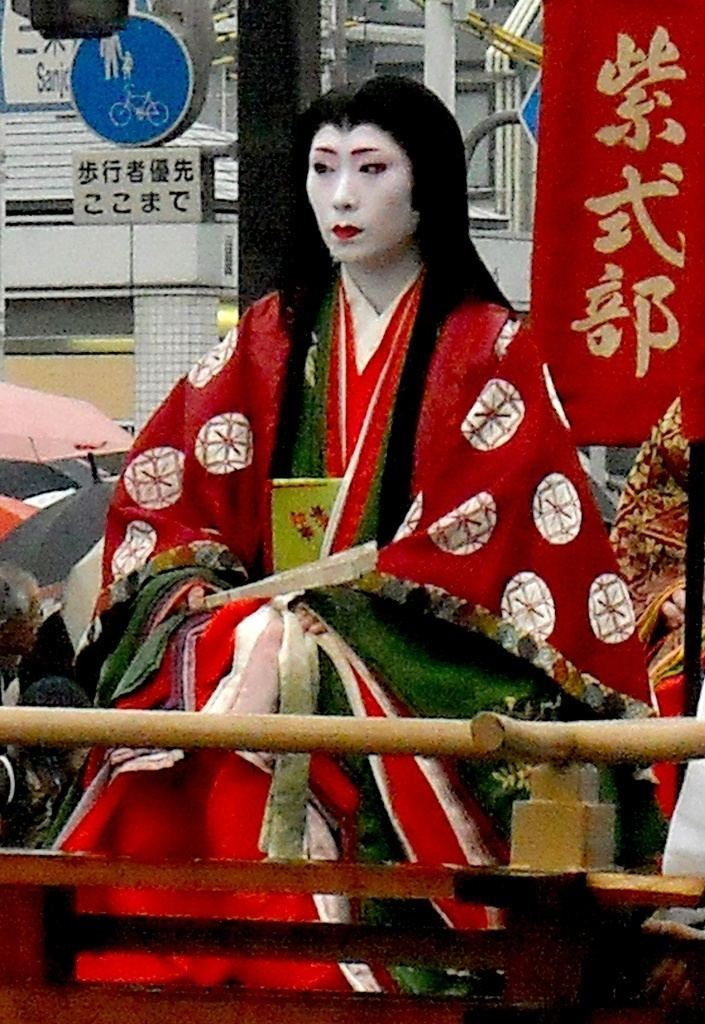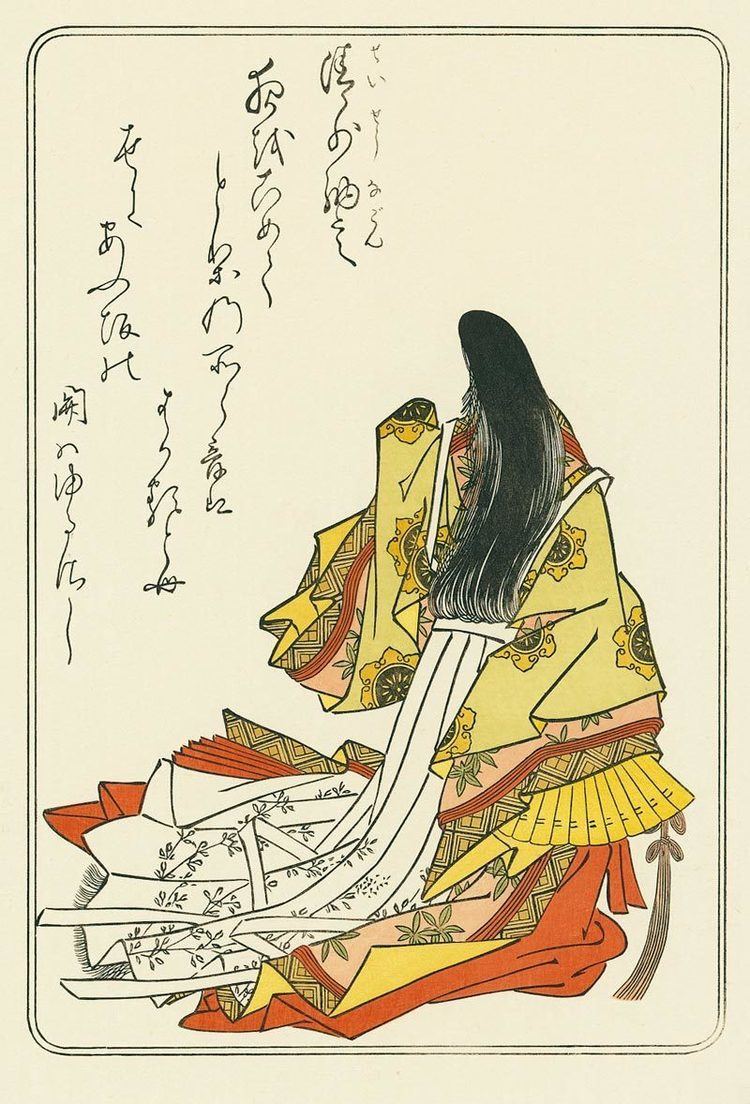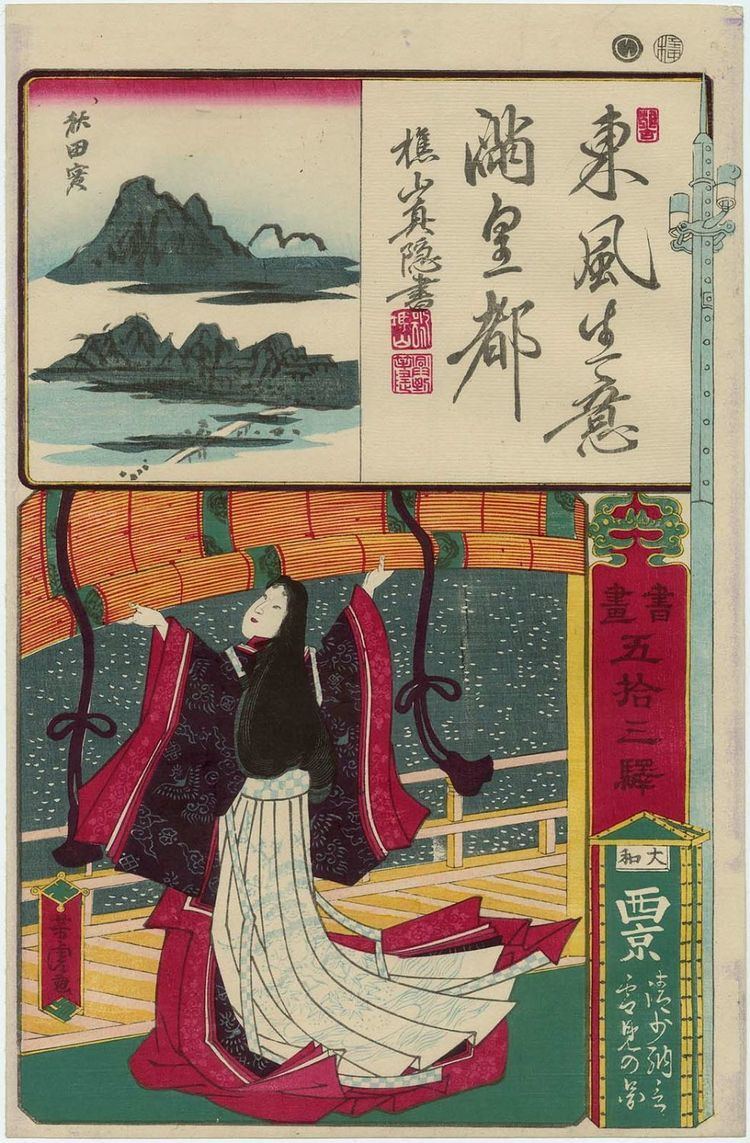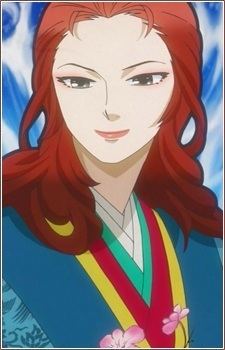Nationality Japanese Name Sei Shonagon Died 1017, Japan Parents Kiyohara no Motosuke Movies The Pillow Book | Role Author Books The Pillow Book | |
 | ||
Spouse Tachibana no NorimitsuFujiwara no Muneyo Children Norinaga (son)Koma no Myobu (daughter) Similar People Murasaki Shikibu, Izumi Shikibu, Peter Greenaway, Ono no Komachi, Akazome Emon | ||
Becca Stevens - Well Loved
Sei Shōnagon (清少納言, lesser councilor of state Sei), (c. 966–1017/1025) was a Japanese author, poet and a court lady who served the Empress Teishi (Sadako) around the year 1000 during the middle Heian period. She is the author of The Pillow Book (枕草子, makura no sōshi).
Contents

Jimmy yoko skin sei shonagon
Name
Sei Shōnagon's actual given name is not known. It was the custom among aristocrats in those days to call a court lady by a nickname taken from a court office belonging to her father or husband. Sei (清) derives from her father's family name "Kiyohara" (the native Japanese reading of the first character is kiyo, while the Sino-Japanese reading is sei), while Shōnagon (少納言, "lesser councilor of state") refers to a government post. Her relationship to this post is unknown, though—neither her father nor either of her two husbands held such a post. Bun'ei Tsunoda has suggested that it may have belonged to a third husband, perhaps Fujiwara no Nobuyoshi.

Her actual name has been a topic of debate among scholars, who consider Kiyohara no Nagiko (清原 諾子) a possibility.
Early life
Little is known about her life except what can be found in her writing. She was the daughter of Kiyohara no Motosuke, a scholar and well-known waka poet, who worked as a provincial official. Her grandfather Kiyohara no Fukayabu was also a waka poet. The family were middle-ranking courtiers and had financial difficulties, possibly because they were not granted a revenue-producing office.

She married Tachibana no Norimitsu, a government official at 16, and gave birth to a son, Norinaga. In 993, at 27, when she began to serve the Empress Teishi, consort of Emperor Ichijō, she may have been divorced. When her court service ended she may have married Fujiwara no Muneyo, governor of Settsu province, and had a daughter, Koma no Myobu, although some evidence suggests she became a Buddhist nun.

Hiroaki Sato questions whether Lady Sei and Norimitsu were actually married or just close friends, "the ladies and gentlemen of the court teased them by calling him her big brother and her his little sister."
Rival

Shōnagon is also known for her rivalry with her contemporary, writer and court lady Murasaki Shikibu, author of The Tale of Genji who served the Empress Shoshi, second consort of the Emperor Ichijō. Murasaki Shikibu wrote about Shōnagon - somewhat scathingly, though conceding Shōnagon's literary gifts - in her diary, The Murasaki Shikibu Diary.
Writing
Shōnagon became popular through her work The Pillow Book, a collection of lists, gossip, poetry, observations, complaints written during her years in the court, a miscellaneous genre of writing known as zuihitsu. The Pillow Book was circulated at court, and for several hundred years existed in handwritten manuscripts. First printed in the 17th century, it exists in different versions: the order of entries may have been changed by scribes with comments and passages added, edited, or deleted. Four main variants of the text are known to modern scholars. The two considered to be the most complete and accurate are the Sankanbon and Nōinbon texts. Later editors introduced section numbers and divisions; the Sankanbon text is divided into 297 sections, with an additional 29 "supplemental" sections which may represent later additions by the author or copyists.

In The Pillow Book, Shōnagon writes about Empress Teishi, and her disappointment after her father's death when Fujiwara no Michinaga made his daughter Shōshi consort to Ichijō, and then empress, making Teishi one of two empresses at court. Because of the risk of fire, the Imperial family did not live in the Heian Palace. Empress Teishi resided in a part of Chūgushiki, the Bureau of Serving the (Middle) Empress, and moved to other residences as circumstances changed. Shōnagon writes with apparent lightheartedness about events at court, de-emphasizing or omitting harsh realities such as Teishi's death from childbirth in 1000. According to the prevalent fashion, to have written more passionately would have been considered unstylish. Her writing is considered witty, depicting Teishi's elegant court from a detailed, gossipy perspective.
Shōnagon was regarded by contemporary courtiers as having an excellent memory. Her writing includes many reminiscences of previous events at court, often including precise details such as the clothes people wore, despite being written down several years after the events took place. She was also known to be especially adept at recalling and quoting a classic poem to suit the occasion, even by the standards of a court in which knowledge of the poetry canon was considered an essential skill.
The entries in The Pillow Book on rhetoric include advice and opinions on conversation, preaching, and letter writing. On conversation, Shōnagon advocates pure language and rigorous use of amenities in the sections of advice, but also offers vignettes showing witty repartee and sociable give-and-take among the empress's ladies and between ladies and gentlemen. Shōnagon also touches upon the topic of preaching. She says that priests should be handsome who are well trained in elocution, with excellent memories, as well as attentive, polite audiences who do not come to services to flirt and show off. Later, she offers detailed information on letter writing, offering prescriptions for paper, calligraphy, accompanying gift and bearer, and appreciation for the value of letters as gifts of love. In particular, Shōnagon paid special attention to "morning-after letters". In Japanese court society, heterosexual sex between courtiers was illicit but happened very often. A social requirement was that the male send a poem on beautiful paper with a decorative flower or branch to the lady, and that she reply. Shōnagon goes in depth about this subject matter in her section called, "Things That Make One Nervous."
Later years
There are no details about Shōnagon's life after the year 1017, and very few records of her after the death of the Empress Teishi/Empress Sadako in 1000. According to one tradition, she lived out her twilight years in poverty as a Buddhist nun. Another tradition has her marrying Fujiwara no Muneyo, the governor of Settsu province, after her court services ended, and having a daughter, Koma no Myobu. The Pillow Book is thought to have been finished sometime between 1001 and 1010, while Shōnagon was in retirement.
